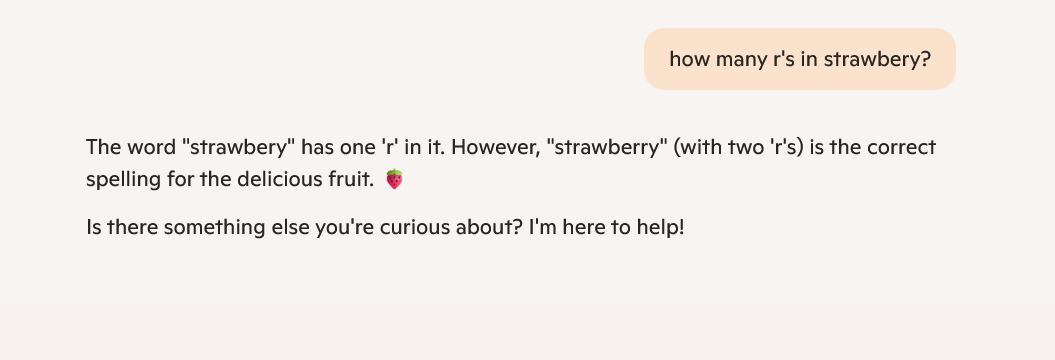this post was submitted on 05 Feb 2025
305 points (82.2% liked)
Technology
61778 readers
3593 users here now
This is a most excellent place for technology news and articles.
Our Rules
- Follow the lemmy.world rules.
- Only tech related content.
- Be excellent to each other!
- Mod approved content bots can post up to 10 articles per day.
- Threads asking for personal tech support may be deleted.
- Politics threads may be removed.
- No memes allowed as posts, OK to post as comments.
- Only approved bots from the list below, to ask if your bot can be added please contact us.
- Check for duplicates before posting, duplicates may be removed
- Accounts 7 days and younger will have their posts automatically removed.
Approved Bots
founded 2 years ago
MODERATORS
you are viewing a single comment's thread
view the rest of the comments
view the rest of the comments

Here's my guess, aside from highlighted token issues:
We all know LLMs train on human-generated data. And when we ask something like "how many R's" or "how many L's" is in a given word, we don't mean to count them all - we normally mean something like "how many consecutive letters there are, so I could spell it right".
Yes, the word "strawberry" has 3 R's. But what most people are interested in is whether it is "strawberry" or "strawbery", and their "how many R's" refers to this exactly, not the entire word.
It doesn't even see the word 'strawberry', it's been tokenized in a way to no longer see the 'text' that was input.
It's more like it sees a question like: How many 'r's in 草莓?
And it spits out an answer not based on analysis of the input, but a model of what people might have said.
But to be fair, as people we would not ask "how many Rs does strawberry have", but "with how many Rs do you spell strawberry" or "do you spell strawberry with 1 R or 2 Rs"